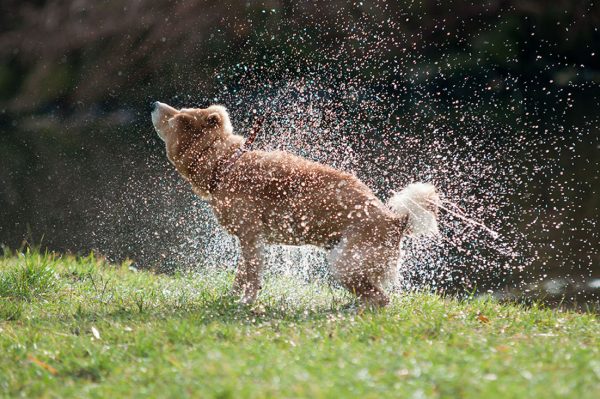Summer, the excellent season of the year that invites us to spend more time outdoors, can also put our pets at risk. High temperatures can cause various alterations in both dogs and cats. Knowing how to prevent them and being watchful for certain signs lets us react in time to help our pets.
What are the ailments most commonly associated with heat?
The most common are:
Heat stroke. This is more common than we believe, because dogs and cats do not transpire through the skin like people; they regulate their body temperature by panting, when they open their mouths and breathe with their tongues out. When animals are enclosed in places with high temperatures and poor ventilation or when they are overly physically active, heat stroke is the order of the day and can even occur without the animal having been exposed to the sun.
Sun stroke. This occurs when our pets are directly exposed to sun rays for a prolonged time. White-skinned animals are the most prone.
Gastroenteritis. Related to the consumption of contaminated water and foods that are either stale or have experienced a break in the cold chain. Outbreaks of viral diseases that cause gastroenteritis are also common.
Skin problems. Sun rays, moisture, lack of coat maintenance and salt water can cause skin damage or aggravate underlying conditions.
External parasites. Although present throughout the year, fleas, ticks or mosquitoes sting pets even more during the hotter months.
Rhinitis. Abrupt changes in temperature leave pets predisposed. This happens regularly in pets that spend a lot of time in air conditioning and then are suddenly exposed to outside heat.
What changes in our pets should draw our attention?
Regarding heat stroke, the main change is excessive panting. The animal feels warm to the touch, with reddened lips, gums and pinnae. They are usually lying on the floor and not very active.
Pets suffering from sun stroke have reddened skin areas and feel hot to the touch as with heat stroke, but they are usually more lively.
Digestive disorders start with poor appetite, nausea or vomiting, and softer stool.
Skin problems generally begin with scratching, bad odor, flaking and lack of coat luster.
External parasites can be noticed when they bite pets, or when we see them scratch. In the case of fleas, they can also be detected through the fecal matter they leave on the animal’s skin.
Respiratory conditions are evidenced by sneezing, nasal secretions or coughing, especially when the animal moves from a very cool environment to a warm one.
How can we prevent these conditions during hot months?
There are some tips for helping our pets have a healthy summer:
- First, make sure your dog or cat always has clean, fresh water, changing it as often as necessary.
- For taking walks, avoid hotter hours and excessive exercise. If you muzzle your dog, use a basket-type muzzle to allow panting; other types are contraindicated.
- If your pet remains outdoors, make sure there is adequate shelter or shade.
- Feed pets early in the morning and at the end of the day, and be sure they eat their food on time, so it doesn’t get stale.
- Keep the skin and fur in optimal condition with regular brushing and nourishing baths.
Use a sunscreen, at least on the most exposed areas of the skin (around the nose, ears, back and loins), especially for white-furred animals. - Eliminate external parasites and prevent their bites. Keep the vaccination and deworming plan up-to-date to strengthen their defenses.
- Avoid sudden temperature changes between one environment and another.
- Never leave them inside the car, even with the windows down. Heat, humidity and the anxiety caused by enclosure are always a bad combination.
- Be extremely careful with certain dog breeds (Pug, Bulldog, Shar-Pei, Mastiff, Boxer and others), Persian cats, obese, elderly or those suffering from a heart condition, as they are more prone to heat stroke.
What should I do if my pet is suffering from heat stroke?
The main advice is to cool them down to lower their temperature. If possible, have them lick some ice cubes. Wet the body and turn on the fan or air conditioner. Also, place towels moistened with cold water at the armpits, paws, abdomen and groin.
In any situation, you should ideally consult your veterinarian to rest assured that your pet is out of danger.
Source: M.V. María Belén Villar, Head of Technical Communication, Labyes Laboratory.

